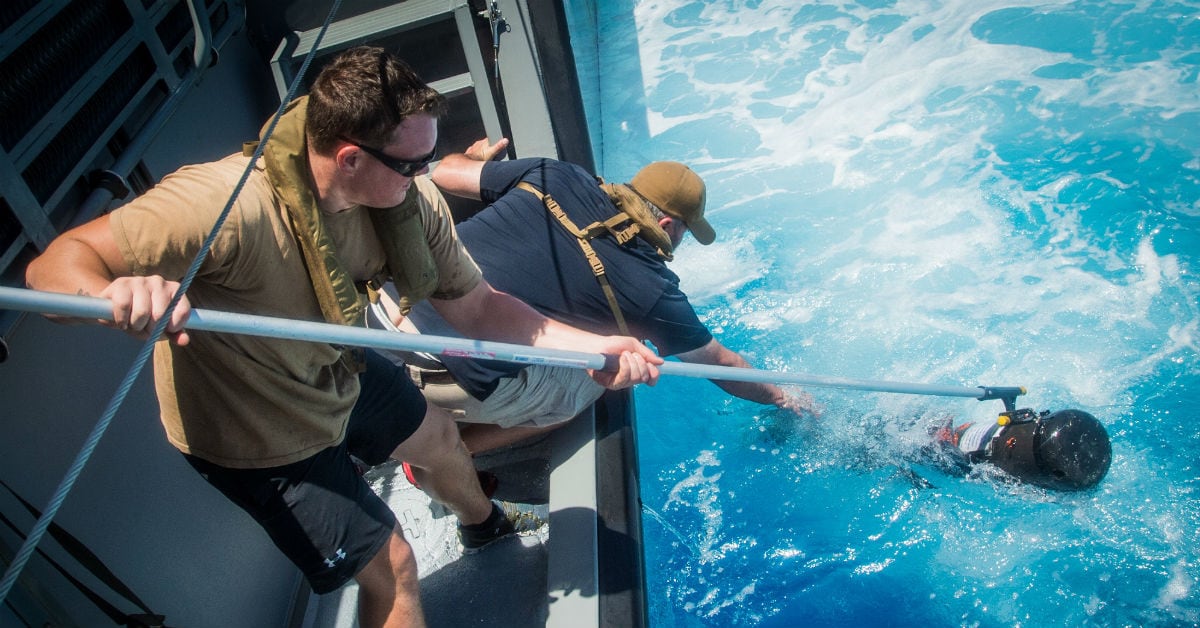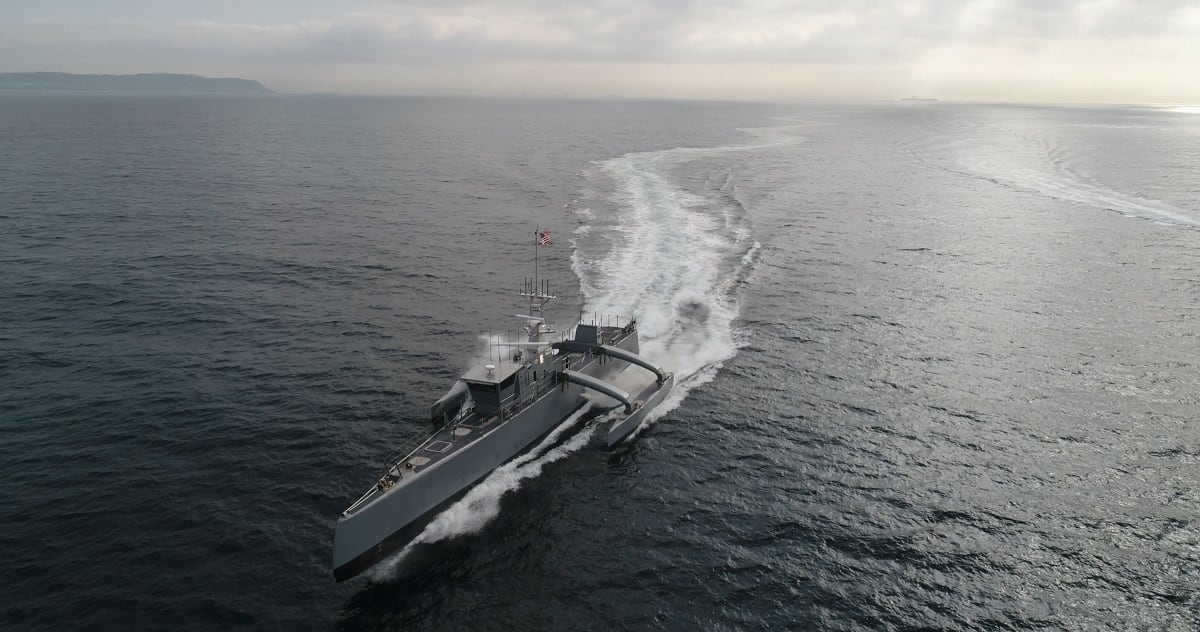The U.S. Navy’s nascent array of unmanned surface, undersea and airborne vehicles will be put to the test early next year in an exercise that seeks to ascertain where the emerging capabilities stand.
U.S. Pacific Fleet will spearhead a so-called “fleet battle problem” involving unmanned assets already stationed in the command’s waters.
This unmanned-centric battle problem will take place “on the sea, above the sea and under the sea,” Rear Adm. Robert Gaucher, PACFLEET’s maritime headquarters director, said Tuesday at the annual defense conference of the Association for Unmanned Vehicle Systems International.
The announcement was first reported by USNI News.
Such battle problems are generally used to test units and see how they would handle certain warfare challenges in given scenarios.
RELATED

While Gaucher said the specifics of the early 2021 unmanned battle problem are still being worked out, it’s the latest signal regarding the high priority the sea service is placing on unmanned vehicles across domains.
Unmanned systems are ripe with potential, but basic challenges continue to be worked out.
Gaucher mentioned how kelp can mess up an unmanned sub’s propeller, and the challenges of launching such vessels in an environment where GPS is not available.
At the same time, the tactical opportunities for such vehicles are legion, he said.
“I can think of a thousand ways they might fit” into the existing fleet, Gaucher said. “Maybe they’re an (intelligence, surveillance and reconnaissance) sensor, maybe they’re a decoy … maybe they’re going to drive in and explode next to (an enemy) pier piling … so that I get more time to get forces forward.”
While different unmanned vessels remain at different stages of development, the Navy has in recent years stood up underwater drone squadrons to deploy and test capabilities.
RELATED

Two MQ-4C Triton unmanned aerial vehicles began conducting operations out of Guam for the first time earlier this year as well.
But while Navy leaders have emphasized agility in getting unmanned systems out into the fleet, Capitol Hill has signaled the sea service needs to get its requirements and systems in order before any big investments in such systems can move forward.
Defense News reported last month that Congress was seeking to slow the funding for the Navy’s large unmanned surface vessel, or LUSV, in the next defense policy bill, with language requiring the Navy to have a working prototype — with all systems tested and integrated — before procurement dollars would flow to build the boats.
Chief of Naval Operations Adm. Mike Gilday acknowledged to Defense News earlier this summer that while such caveats are frustrating, he agrees with Congress that requirements must be fleshed out up front.
“The approach has to be deliberate,” he said. “We have to make sure that the systems that are on those unmanned systems with respect to the (hull, mechanical and electrical system), that they are designed to requirement and perform to requirement. And most importantly, are those requirements sound?”
Geoff is the managing editor of Military Times, but he still loves writing stories. He covered Iraq and Afghanistan extensively and was a reporter at the Chicago Tribune. He welcomes any and all kinds of tips at geoffz@militarytimes.com.




